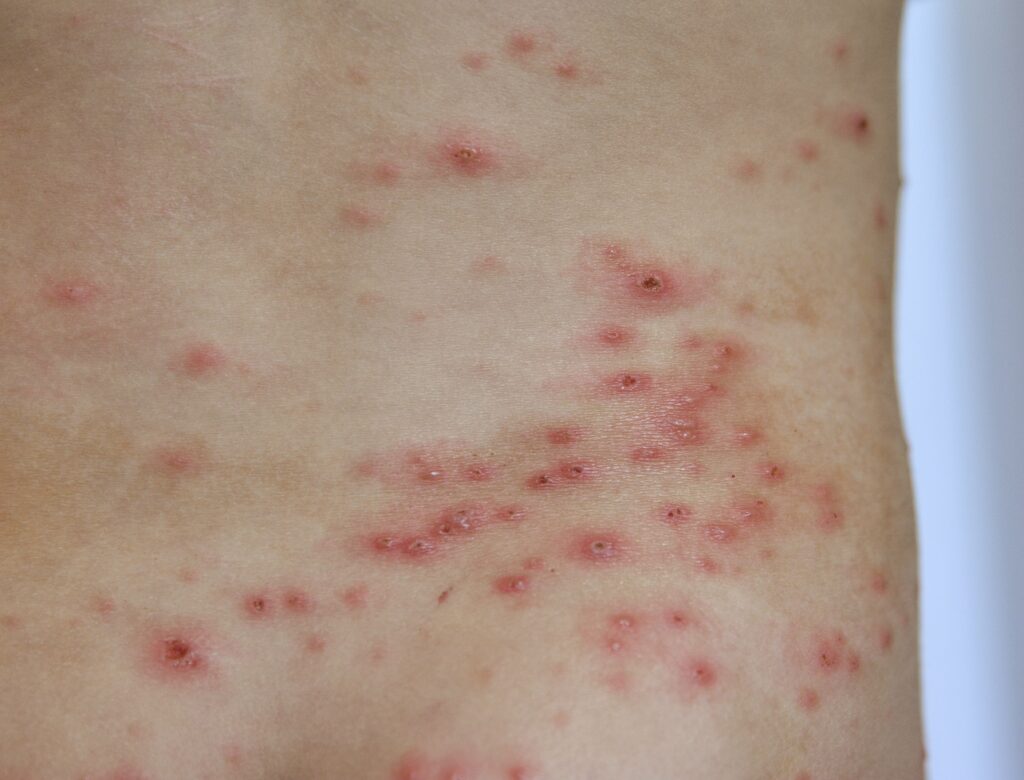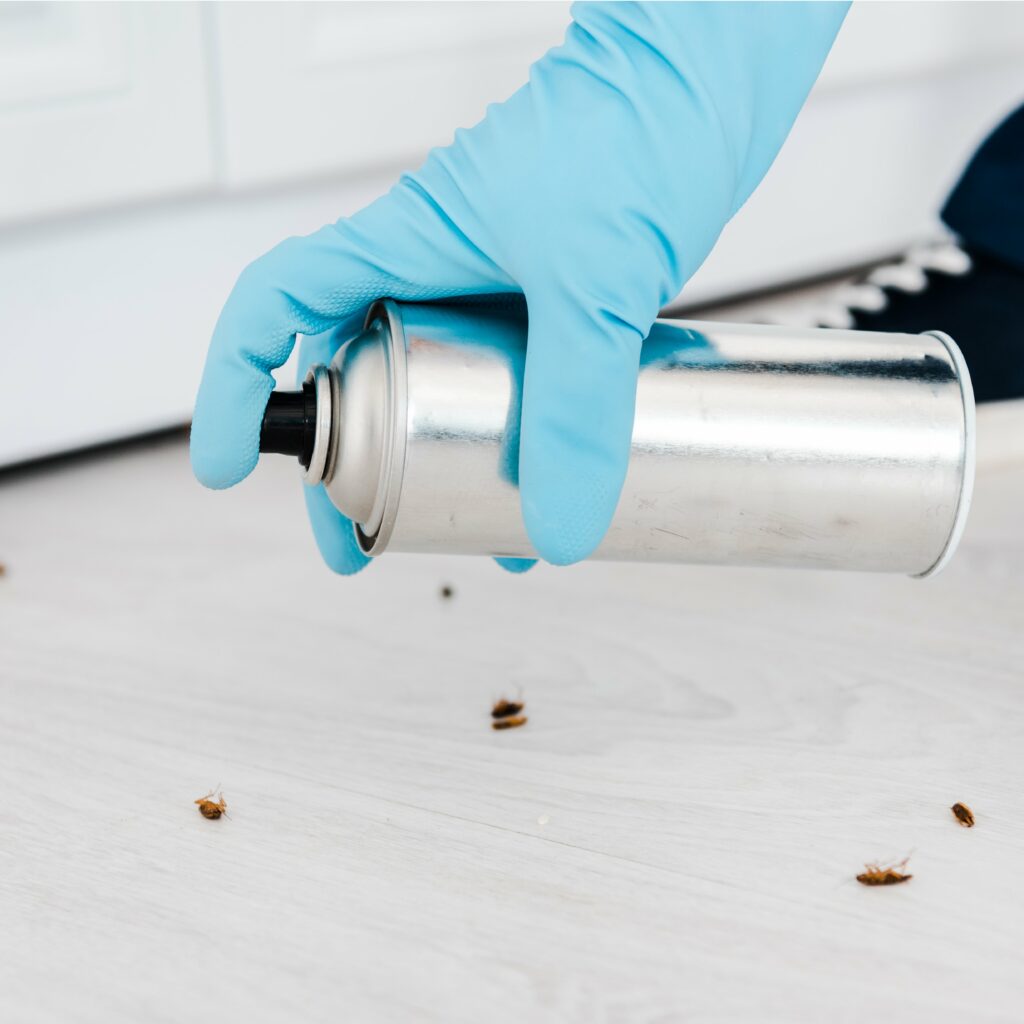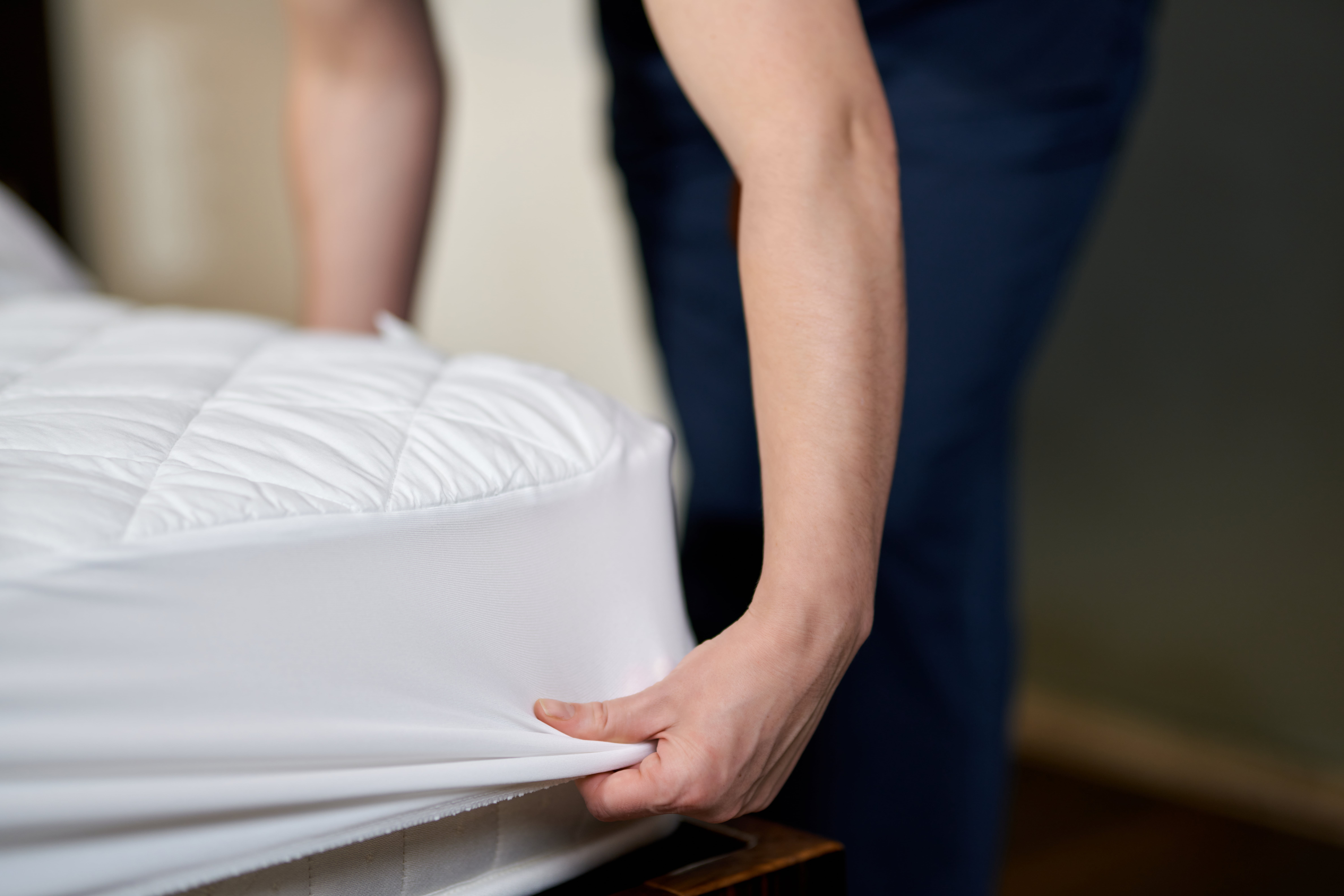Bed Bug Extermination Methods
The Growing Bed Bug Problem Worldwide
Picture this: you wake up one morning, swatting at an invisible itch on your arm, only to discover a cluster of tiny, bloodsucking pests feasting upon you. Unfortunately, this is not an isolated incident.
Bed bugs have become a pervasive problem worldwide, infesting everything from modest homes to luxurious hotels. Their ability to hitch rides on luggage and clothing has allowed them to spread rapidly, leaving no corner of the globe untouched.
The resurgence of these nocturnal nuisances can be attributed to various factors. Increased international travel and the ban on certain effective pesticides have contributed to the rise in bed bug populations.
Moreover, their clever adaptability has made them resilient against many traditional pest control methods. It is estimated that one in five Americans has either encountered or knows someone who has battled these persistent pests.
Delve into the realm of our professional services for bed bug control and treatment! Uncover the strategies and techniques we employ to effectively combat and eliminate your bed bug infestation. Click here to gain further insights into our specialized bed bug control and treatment services!
The Importance of Effective Bed Bug Extermination Methods

When faced with a bed bug infestation, it is crucial to take immediate action. Ignoring the problem will only exacerbate it; these resilient creatures reproduce quickly and can multiply into a full-blown infestation in no time.
Delaying treatment may lead to further discomfort and potential health risks for those affected. Effective bed bug extermination methods offer relief from these unwelcome intruders while ensuring long-term prevention strategies are put in place.
Quick fixes like bug bombs or over-the-counter chemical treatments may provide temporary relief but often fail to address the root cause of the problem: eliminating all the bugs – eggs included – from your living space completely. In this comprehensive guide, we will explore various bed bug extermination methods available today.
From non-chemical approaches such as heat treatments and vacuuming techniques to chemical treatment and insecticides tailored specifically for bed bug eradication – we will delve deep into each method’s effectiveness, benefits, and limitations. Whether you find yourself confronting a minor bed bug issue or battling a full-blown infestation, this article will equip you with the knowledge needed to take control of the situation.
Remember, prevention is key, so we will also explore strategies to safeguard your home and prevent future infestations. So, let’s roll up our sleeves and embark on the journey of understanding these notorious pests and discovering effective ways to bid them farewell.
Bed Bug Heat Treatment: How Does It Work?
When it comes to eliminating bed bugs, heat treatment has gained popularity as an effective method. Our article on bed bug heat treatment: how does it work delves into this topic, explaining the process and mechanisms behind heat treatments. Discover the advantages of using heat to eradicate bed bugs, its effectiveness in reaching hidden areas, and considerations for implementing this method. Explore the power of heat in the battle against bed bugs!
Bed Bug Chemical Treatments: Types and Effectiveness
Chemical treatments are a common approach to bed bug extermination. However, not all chemical treatments are equal in terms of effectiveness. Our comprehensive article on bed bug chemical treatments: types and effectiveness explores different types of chemical treatments available and provides insights into their effectiveness against bed bugs. Discover the pros and cons of various chemicals, and gain a better understanding of their role in controlling infestations.
Bed Bug Steam Treatment: Pros and Cons
Steam treatment has emerged as a popular non-chemical method for tackling bed bug infestations. In our informative article on bed bug steam treatment: pros and cons, we discuss the benefits and limitations of using steam to combat bed bugs. Learn about the advantages of steam treatments in reaching cracks and crevices, as well as the precautions and considerations associated with this approach. Discover if steam treatment is the right choice for your situation.
Bed Bug Freezing: Can Cold Temperatures Kill Bed Bugs?
Extreme temperatures can be used to control bed bugs, and freezing is one such method. Our article on bed bug freezing: can cold temperatures kill bed bugs explores the efficacy of freezing as a bed bug control strategy. Learn about the impact of cold temperatures on bed bug survival, the challenges associated with freezing treatments, and how to implement freezing methods effectively. Discover if cold temperatures can be the solution you’re seeking.
Bed Bug DIY Extermination Methods: Are They Effective?
Do-it-yourself (DIY) extermination methods are a popular choice for those looking to tackle bed bug infestations themselves. Our article on bed bug DIY extermination methods: are they effective provides valuable insights into the effectiveness of various DIY approaches. Explore the pros and cons of DIY methods, common mistakes to avoid, and tips for maximizing success. Make an informed decision and determine if DIY extermination is the right path for you.
Understanding Bed Bugs
Description and Identification of Bed Bugs
Ah, bed bugs – those pesky little creatures that can turn a peaceful night’s sleep into a nightmare. So, what is bed bug activity what exactly are these notorious bloodsuckers?
Bed bugs are small, oval-shaped insects that belong to the Cimicidae family. They have flat bodies, ranging in color from reddish-brown to light tan.
Don’t let their size fool you; these tiny terrors can cause big problems. Identifying bed bugs is crucial for effective extermination to control bed bugs.
These sneaky critters hide in various places within our homes. Look out for telltale signs like rust-colored stains on your sheets or mattress, which result from crushed dead bed bugs, or their excrement.
You may also spot small dark spots on your bedding or furniture – these are their droppings. When inspecting your living space for these unwelcome guests, keep an eye out for adult bed bugs as well as their eggs and nymphs (young bed bugs).
The adults measure about 4-5 mm in length and resemble apple seeds with legs! Eggs are tiny and pearly white, while nymphs are translucent before they feed and become darker in color.
Life Cycle and Habits of Bed Bugs
To successfully combat these resilient pests, it’s important to understand their life cycle and habits. Bed bugs go through several stages before reaching adulthood: egg, five nymphal stages (instars), and adult. The entire process can take anywhere from one month to several months depending on temperature conditions and food availability.
Bed bugs are notorious hitchhikers; they easily cling onto clothing, luggage, or furniture during travel and infest new areas when given the opportunity. Once inside your home, they’ll seek out cozy hiding spots near beds or couches where humans rest undisturbed during the night.
Their favorite hiding places typically include mattresses, box springs, bed frames, headboards, and even cracks in walls or floors. At night, these nocturnal pests crawl out of their hiding spots and feed on human blood for about 5-10 minutes before returning to their sanctuary.
Interestingly, they’re attracted to the carbon dioxide we exhale and our body warmth. Don’t be fooled into thinking that bed bugs are only found in dirty environments – they can infest even the cleanest homes, hotels, or dormitories.
Understanding the habits of bed bugs is instrumental in detecting and eliminating them effectively. By knowing where they hide and how they behave, you’ll increase your chances of eradicating these unwelcome guests from your abode once and for all.
Stay tuned as we delve into non-chemical and chemical bed bug extermination methods that will help you reclaim your peaceful nights without any unwelcome visitors!
Non-Chemical Bed Bug Extermination Methods
Heat Treatment: Banishing Bed Bugs with High Temperatures
When it comes to battling bed bug infestations, heat treatments have emerged as a powerful weapon. These methods involve exposing the affected area to intense heat, typically around 120°F to 140°F (48°C to 60°C), which is lethal for many bed bugs at all stages of their life cycle. Heat treatment not only kills the adult bed bugs but also targets their eggs and nymphs, ensuring thorough eradication.
The process involves using specialized equipment, like industrial heaters or steam machines, to raise the temperature in the infested room or space. The heat penetrates into cracks and crevices where these elusive pests hide, eliminating them effectively.
However, it’s important to note that heat treatment may require multiple treatments for complete eradication since some hiding places might be inaccessible during the first round. It is advisable to consult a professional pest control company experienced in heat treatments to ensure optimal results.
Cold Treatment: Freezing Out the Pesky Bloodsuckers
While heat is a tried-and-tested method, cold treatment has also gained popularity as an alternative approach in recent years. This method harnesses extreme cold temperatures to eliminate bed bugs from infested items or spaces. By exposing the affected materials or areas to sub-zero temperatures below -30°F (-34°C), it effectively kills both adult bed bugs and their eggs.
Cold treatment can be carried out using various techniques such as using liquid nitrogen or carbon dioxide snow machines specifically designed for pest control purposes. These freezing agents are applied directly onto infested objects or areas, causing rapid temperature drops that quickly freeze and eradicate the troublesome critters lurking within.
Vacuuming and Steam Cleaning: A Dual Attack on Bed Bugs
Vacuuming and steam cleaning are non-chemical approaches that target bed bugs hiding in furniture, carpets, and other surfaces. These methods not only physically remove the pests but also help eliminate their eggs and nymphs. To vacuum effectively, use a high-powered vacuum cleaner with a HEPA filter to ensure that the sucked-up, immature bed bugs are captured safely without the risk of re-infestation.
Pay extra attention to areas like mattresses, box springs, cracks in walls and floors, and electrical outlets where bed bugs tend to hide. Steam cleaning is another powerful tool in the battle against bed bugs.
The high temperatures generated by steam cleaners penetrate deep into fabrics and materials, effectively killing bed bugs at all life stages on contact. Move the steam cleaner slowly across infested furniture or carpets to ensure thorough treatment.
Remember, while these non-chemical methods can help combat bed bug infestations effectively, they may not be sufficient for severe cases or large-scale infestations. In such instances, it is advisable to consult with a professional pest control company that can provide tailored solutions for your specific situation.
Chemical Bed Bug Extermination Methods

Pyrethroids: Commonly used insecticides for treating infestations
When it comes to combating bed bug infestations, pyrethroids have long been the go-to insecticides for many pest control companies. Derived from the chrysanthemum flower, these chemicals are highly effective against bed bugs due to their neurotoxic properties. Pyrethroids work by disrupting the nervous system of these pesky pests, leading to paralysis and eventual death.
One of the reasons why pyrethroids are commonly used is their broad spectrum of activity against various insects, including bed bugs. They offer quick knockdown effects and residual activity that can help provide long-term control.
Pyrethroid-based products are available in different formulations such as sprays, dusts, and aerosols, making them convenient for both professional exterminators and DIY enthusiasts. However, it’s important to note that some bed bug populations have developed resistance to certain pyrethroids over time.
This means that using a single pyrethroid product may not be effective against all infestations. To overcome this challenge, it is recommended to rotate different insecticides with alternative modes of action or consider using combination products that contain multiple active ingredients.
Neonicotinoids: An alternative class of insecticides with unique properties
In recent years, neonicotinoids have gained attention as an alternative class of insecticides for bed bug control. These compounds target the nervous system of insects by binding to specific receptors responsible for transmitting nerve impulses.
Neonicotinoids are systemic insecticides that can be applied directly onto surfaces or taken up by plants if used as seed treatments. What makes neonicotinoids unique is their mode of action and relative low toxicity to mammals compared to other chemical alternatives.
They have the advantage of being effective against both adult bed bugs and their eggs, which is crucial for complete eradication. However, it is important to follow label instructions and use them responsibly to avoid unintended harm to beneficial insects such as bees.
Insect growth regulators (IGRs): Preventing reproduction and growth of bed bugs
Insect growth regulators (IGRs) are another tool in the pest management professional’s arsenal when it comes to combating bed bug infestations. Unlike traditional insecticides that directly kill bed bugs, IGRs work to treat bed bugs by disrupting their reproductive cycle and preventing the development of immature stages into adults. By mimicking the natural hormones found in bed bugs, IGRs interfere with their normal growth and reproductive processes.
This leads to stunted development, impaired egg production, and ultimately population decline over time. One advantage of using IGRs is that they have low toxicity to humans and pets, making them a popular choice in sensitive environments such as homes, hotels, and healthcare facilities.
It’s worth noting that while IGRs can be effective in reducing bed bug populations, they may not provide immediate results compared to contact insecticides or heat treatments. Since they primarily target the reproductive capabilities of bed bugs rather than killing them outright, multiple applications over several weeks may be necessary for optimal control.
Remember that each treatment method has its strengths and limitations when it comes to tackling a bed bug infestation. It’s always recommended to consult with a professional pest management expert who can assess the situation thoroughly and recommend appropriate chemical interventions based on factors such as severity of the female bed bug infestation, affected areas, and potential risks associated with different methods.
Integrated Pest Management (IPM) Approach to Bed Bug Control
A Comprehensive Approach to Extermination: Combining Multiple Methods
When it comes to battling the relentless pests known as bed bugs, a single approach may not be enough. Enter Integrated Pest Management (IPM) – a holistic strategy that harnesses the power of multiple bed bug extermination methods.
By integrating various techniques, IPM provides a comprehensive and effective solution for eliminating bed bugs and preventing their return. One key aspect of IPM is the use of multiple treatments in combination.
Rather than relying solely on chemical insecticides or heat treatments, pest control companies employing an IPM approach will employ a diverse range of methods tailored to the specific infestation at hand. For example, a treatment plan may involve vacuuming, steam cleaning, targeted insecticides, and heat treatment in order to maximize effectiveness.
The Importance of Thorough Inspection, Monitoring, and Preventive Measures
In any battle against bed bugs, knowledge is power. Thorough inspection is an integral part of IPM as it allows for early detection and precise targeting of infested areas. Trained professionals meticulously search for signs of bed bug presence – from tiny blood stains on bedding to shed exoskeletons – ensuring no hiding spots are missed.
Monitoring plays a crucial role in assessing the success of bed bug control efforts. Using specialized tools such as interceptors or monitoring devices that emit carbon dioxide (which attracts hungry bed bugs), pest control experts can accurately gauge the level of infestation before and after treatment.
This helps determine whether further measures are necessary or if eradication has been achieved. Preventive measures are also essential components of IPM.
Taking proactive steps to repel bed bugs, such as sealing cracks and crevices around beds or using mattress encasements can help stop bed bugs from infiltrating your sleeping quarters in the first place. Regularly inspecting and cleaning your bedding, luggage, and furniture can also catch bed bugs early on, preventing a minor infestation from spiraling out of control.
Maintaining Control and Achieving Peace of Mind
The beauty of an IPM approach lies in its ability to tackle bed bug infestations comprehensively. By combining various bed bug extermination methods, conducting thorough inspections, monitoring progress, and implementing preventive measures, both pest control professionals and homeowners can feel confident in their ability to keep these pesky creatures at bay.
Bed bugs are no ordinary foes – they have adapted to evade many traditional pest control techniques. Therefore, employing an IPM strategy that targets them from multiple angles is essential for success.
With proper execution and ongoing vigilance, you can achieve effective bed bug control while ensuring a peaceful night’s sleep free from the itchy bites caused by these relentless intruders.
Subtopics on Niche Bed Bug Extermination Methods:
Silica Gel Dusts & Desiccants: Nature’s Pest Control
When it comes to combating bed bugs, nature often provides us with effective solutions. Silica gel dusts and desiccants are a prime example. These substances contain tiny particles that dehydrate and kill bed bugs by absorbing their moisture, ultimately causing their demise.
Silica gel dusts work by adhering to the exoskeleton of the pests, disrupting their ability to retain moisture and leading to their eventual death. The application of silica gel dusts is relatively straightforward.
Start by identifying the areas where bed bugs hide, such as cracks and crevices in walls, baseboards, or behind electrical outlets. With caution, apply a thin layer of silica gel dust in these hiding places.
The fine particles will cling to the pests as they crawl through these treated areas, effectively leading to their elimination. One of the advantages of using silica gel dusts is that they pose no immediate threat to humans or pets.
However, it’s crucial to follow safety guidelines while handling them, as inhalation can cause respiratory irritation. Additionally, keep in mind that silica gel dusts are primarily effective against crawling bed bugs and may not reach those hiding deep within mattresses or box springs.
Diatomaceous Earth: An Impenetrable Fortress Against Bed Bugs
If you’re searching for an all-natural way to combat bed bug infestations early on before they escalate into larger problems, diatomaceous earth (DE) is worth considering. DE is a soft sedimentary rock made up of fossilized remains of diatoms – tiny aquatic organisms with skeletons composed primarily of silica. To use DE against bed bugs effectively, apply a thin layer around the areas where the pests are likely to travel or hide.
As bed bugs crawl through this layer, the razor-sharp microscopic edges of the DE particles will cut into their exoskeletons, causing them to dehydrate and perish. Diatomaceous earth is a long-lasting solution as long as it remains dry, making it an excellent preventive measure against potential infestations.
Remember that diatomaceous earth is most effective against crawling bed bugs and may not reach those hiding deep within mattresses or box springs. It’s also important to use food-grade DE specifically labeled for pest control purposes, as other varieties may contain additives that could be harmful if ingested or inhaled.
Steamers: Harnessing the Power of Heat

In the battle against bed bugs, heat is a formidable weapon – steamers provide an effective means of utilizing this weapon. Steam treatment has gained popularity due to its ability to kill bed bugs at all stages of their life cycle without relying on chemicals.
The high temperature emitted by steamers penetrates mattresses, furniture crevices, and other hiding places where bed bugs thrive. When using a steamer for treating bed bugs, ensure that it reaches temperatures above 160°F (71°C) since this temperature is lethal for these pests.
Direct the steam nozzle towards potential hiding spots such as seams along mattresses or box springs, cracks in furniture frames, and baseboards. Move slowly to allow the heat from the steam to reach deep within these areas and eradicate any hidden pests.
While steam treatment can be highly effective in eliminating bed bugs on contact, keep in mind that it may not provide residual protection after treatment. To achieve optimal results when using steamers against bed bug infestations, combine these treatments with other preventive measures like mattress encasements and regular inspections.
Encasements: A Shield Against Re-infestation

Mattress encasements play a crucial role in preventing re-infestation and protecting your sleeping space from bed bugs. These specialized covers act as a physical barrier, preventing new bed bugs from infesting mattresses and box springs while trapping any existing pests inside. When choosing mattress encasements, ensure they are specifically designed for bed bug protection.
Look for features such as bug-proof zippers, reinforced seams, and micro-zipper technology that prevents the escape or entry of even the smallest bed bug nymphs. Additionally, opt for encasements that are certified by reputable organizations to guarantee their effectiveness.
Using encasements alone may not eradicate an existing bed bug infestation but combining them with other extermination methods can significantly enhance control efforts. Encase mattresses and box springs after thorough treatment to prevent hiding bed bugs from escaping or re-infesting your sleeping areas, ensuring a peaceful night’s sleep free from unwelcome guests.
Tips for Effective Bed Bug Extermination
Preparation steps before treatment begins

A Clean Canvas for Battle Before embarking on the journey to eradicate those pesky bed bugs, it’s crucial to set the stage by preparing the affected room. Begin by decluttering the space, removing any unnecessary items that may serve as hiding spots.
Launder all bedding, linens, and clothing using high heat settings to kill any hitchhiking and other bed bugs off. Remember to seal these items in plastic bags after cleaning.
Next, dismantle your bed frame and remove the mattress and box spring. Inspect every nook and cranny of these components for any signs of infestation or eggs.
Vacuum them thoroughly with a crevice tool attachment, paying extra attention to seams and tufts. Pull out all furniture from walls and disassemble entire house as much as possible to gain access to hidden areas where these blood-sucking intruders may be lurking.
Don’t forget to vacuum every inch diligently. Now that you’ve readied the battlefield by eliminating clutter, laundering textiles, dismantling furniture, and vacuuming thoroughly, you’re ready for the next phase: treatment!
The battle begins: Treatment methods
Unleashing Your Arsenal Against Bed Bugs When it comes to dealing with bed bugs effectively, there are various treatment methods at your disposal. However, it’s crucial to note that many bed bug infestations require professional intervention for complete eradication due to their resilience.
For a DIY approach, start by inspecting electrical outlets near beds or furniture; these can provide easy access points for these sneaky creatures. Use a screwdriver or a flashlight equipped with an extension mirror if needed.
One effective non-chemical method is steaming. Utilizing steamers in combination with vacuuming can be highly beneficial in killing bed bugs at all stages of development.
The high temperature effectively dehydrates and kills these unwanted guests. When opting for chemical treatments, exercise caution and follow label instructions meticulously.
Use insecticides specifically designed for bed bug control, targeting areas where they congregate such as seams, crevices, and cracks. Remember to avoid spraying these chemicals on areas where you come into direct contact regularly.
Conclusion
Embrace a Bed Bug-Free Future While the battle against bed bugs may seem daunting, taking proactive measures and employing effective strategies can lead to victory.
By diligently preparing the affected room and using appropriate treatment methods, you can significantly reduce their numbers or even eliminate them entirely. However, it’s essential to acknowledge that severe infestations may require the expertise of a pest management professional.
Don’t hesitate to seek their assistance if needed. Remember, in this battle against these resilient creatures, persistence is key.
Combine your preparation steps with suitable bed bug treatment methods and stay vigilant in monitoring for any signs of resurgence. With determination and proper execution of bed bug extermination methods, restful nights free from those tiny terrors can be yours once again!
Frequently Asked Questions:
The best method for bed bug extermination often involves a combination of approaches, including heat treatments, insecticide applications, and thorough cleaning.
While no treatment can guarantee 100% elimination, a combination of professional pest control services, proper preparation, and diligent follow-up can significantly increase the effectiveness of bed bug eradication.
The timeframe for completely getting rid of bed bugs varies depending on the extent of the infestation and the treatment methods used. It can range from several weeks to a few months.
Professionals typically use a range of techniques and products, including insecticides, steam treatments, vacuuming, and mattress encasements, tailored to the specific needs of each infestation.
If this article resonated with you, you may also discover value in these akin pieces:
Unmasking the Elusive: A Comprehensive Guide to Bed Bug Infestation Signs and Detection
Mastering the Art of Bed Bug Eradication: A Comprehensive Guide to Control and Prevention








